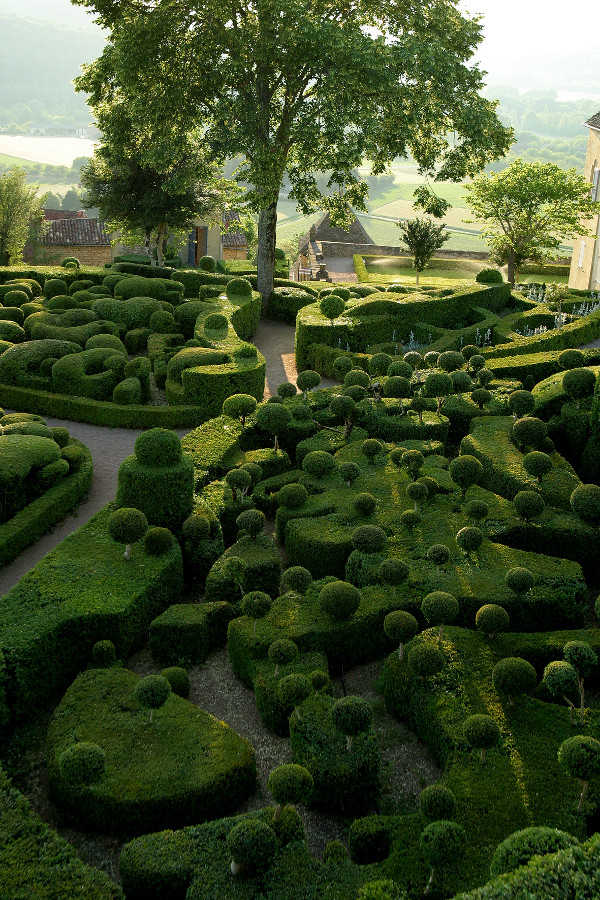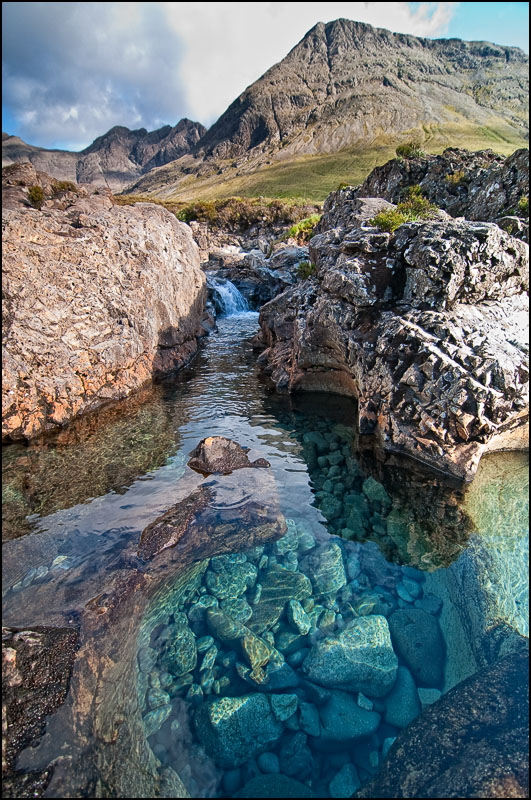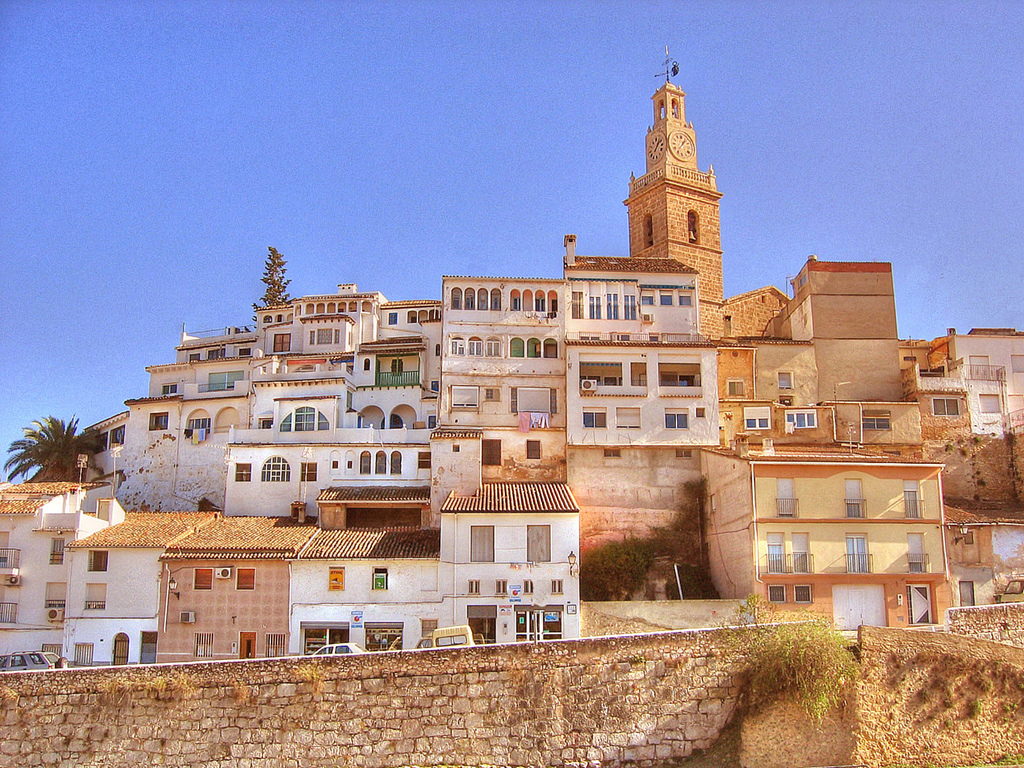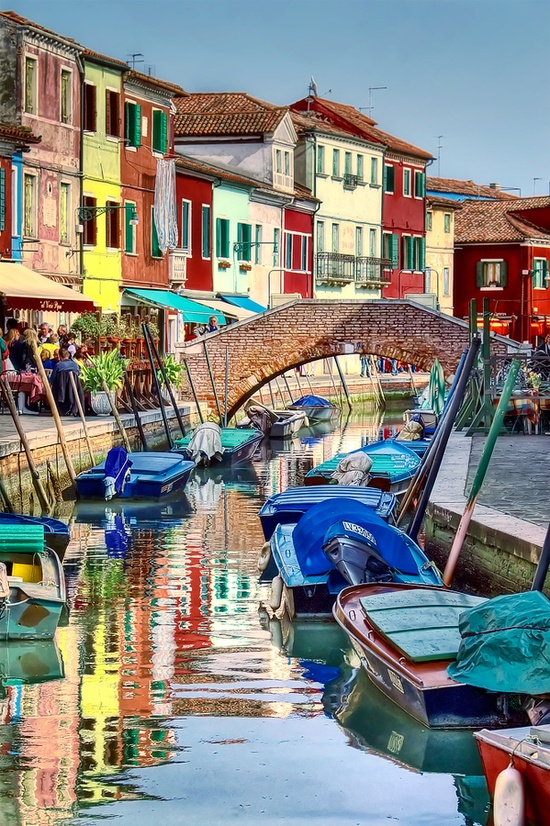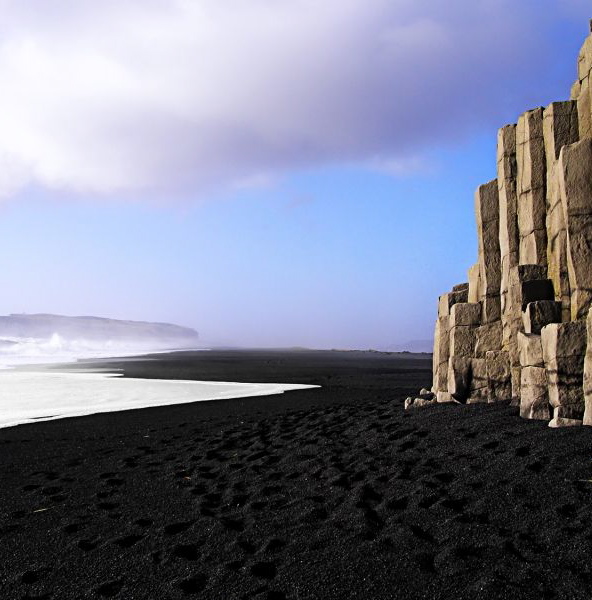Like something out of a story book, the Gardens of Marqueyssac is quite possibly the most beautifully manicured landscapes we have ever encountered. First developed over three centuries ago, the Gardens of Marqueyssac were restored to their original form, opening up to the public in 1996.
This luscious green landscape embodies an equally stunning chateau that lies above the Dorodogne valley. If you are ever in the area, guests are welcome to experience the 5 km of walking trails located between the Bourdeaux and Rhone wine regions.
The Château de Marqueyssac is a 17th century chateau and gardens located at Vézac, in the Dordogne Department of France. The chateau was built at the end of the 17th century by Bertrand Vernet de Marqueyssac, Counselor to Louis XIV, on cliffs overlooking the Dordogne Valley. The original garden à la française was attributed to a pupil of André Le Nôtre, and featured terraces, alleys, and a kitchen garden surrounding the chateau. Between 1830 and 1840, Julien Bessières constructed a chapel and a grand alley one hundred meters long for horseback rides.
In the 1860s, the new owner, Julien de Cervel, began to plant thousands of boxwood trees – today there are over 150,000 – and had them carved in fantastic shapes, many in groups of rounded shapes like flocks of sheep. He also added linden trees, cypress trees, and stone pine from Italy, and introduced the cyclamen from Naples.[1] Following the romantic style, he built rustic structures, redesigned the parterres, and laid out five kilometers of walks.
In the second half 20th century the house was not frequented occupied, and the gardens were not well maintained. Beginning in 1996, a new owner, Kleber Rossillon, restored the gardens to their old character, and added some new features, including an alley of santolina and rosemary, and, in the romantic spirit of the 19th century, a course of water descending from the belvedere and ending in a cascade. The gardens were opened to the public in 1996.
Since 1997, the gardens have been classified amongst the Notable Gardens of France by the Committee of Parks and Gardens of the Ministry of Culture.

